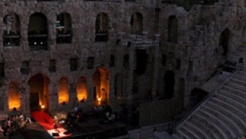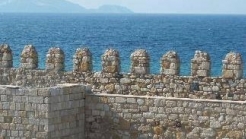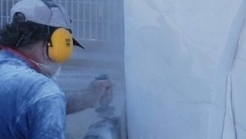

Greece
The Toplou Monastery is historical and dates back to its inception in the 15th century. Collapsed by an earthquake in 1612 and was rebuilt with the financial assistance of the Venetians.
The Toplou Monastery is historical and dates back to its inception in the 15th century. Collapsed by an earthquake in 1612 and was rebuilt with the financial assistance of the Venetians. Destroyed and depopulated from the Turks after the conquest of Crete. Converted into Moni Stavropigiaki, monastery in 1704. Throughout the period of the Turkish occupation worked in one school, while after 1870 it was founded there a school of mutual teaching.
The Monastery is its fortress Moni Stavropigiaki, monastery. The main building, 800sq. m , is three-story and includes cells, hostels, galleys was constructed together with prior’s apartment, warehouses. The general ledger is double transept, with the northern transept dedicated to Mary and the south transept later in ΄St John the Theologian. Characteristic is the belfry of the monastery, which bears embossed crown and crosses with inscriptions, dated 1558.
Operates as a single, while there is interest Museum.
The Museum of Toplou Monastery contains the following collections:
- Variety of the Cretan images,
- Engravings Collection.
The most important exhibits of the Museum of the Monastery are:
- Notre Dame the asbestos, 15TH century. Portable image,
- Christ Almighty, 15TH century. Work of the painter Andrea Ritzou Portable image,
- Agios Ioannis Prodromos and scenes of life, 17th century. Work of the MWOS Kavertza. Portable image,
- THE Assumption of the Virgin Mary, 15TH century. Portable image,
- Panagia now an unspoilt, 15TH century. Portable image,
- Notre Dame passion and Agios Nikolaos, 1642. Portable image,
- Agioi Theodoroi are offered, 1723. Work of the painter Nikita. Portable image,
- Agia Triada, 17TH century. Portable image,
- Holy Ignazio and Savvas, 17TH century. Portable image,
- Holy Athanasios, Kirill and Agios Ioannis Elaimon, 17TH century. Portable image.


The Athens festival is big celebration, which continues the active presence for 56 consecutive summers, which have shown some of the most famous names of the theater, music, dance, the field of music is Mitropoulos and Callas, Sain-Saens and Rostropovits, Pavarotti, Leonidas Kabakos


Generally, the Ottoman Heraklion is of great interest to anyone wander and get acquainted with the flavor of a bygone era.


The 9th International Sculpture Symposium was launched on the 9th and will be completed on July 29th, at the venue of the Outdoor Sculpture of Veneratos Surprising works of art on world peace "emerge" through marble in the work of the 9th International Symposium of Sculpture
1039 Ε 6061 01515 00